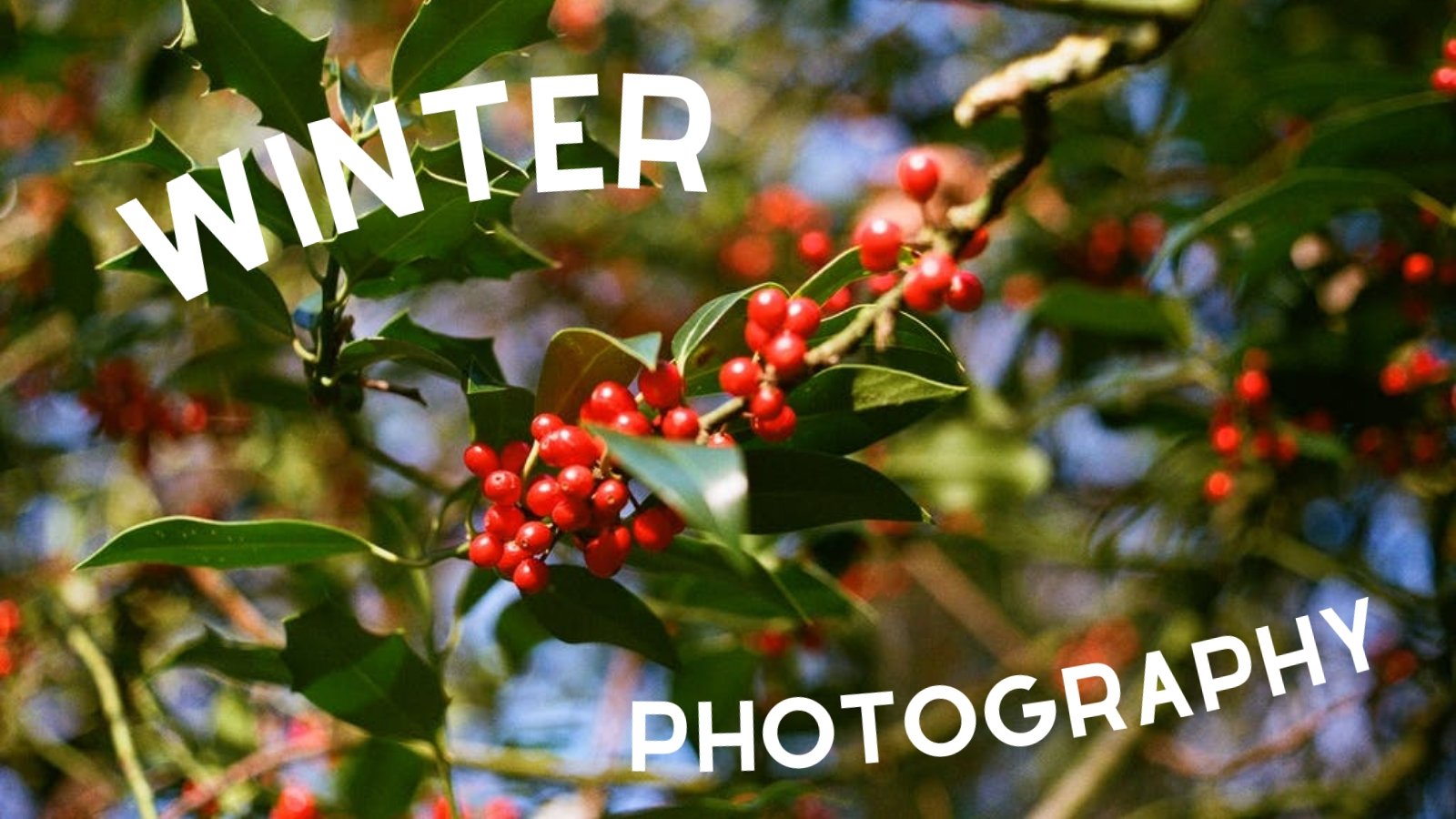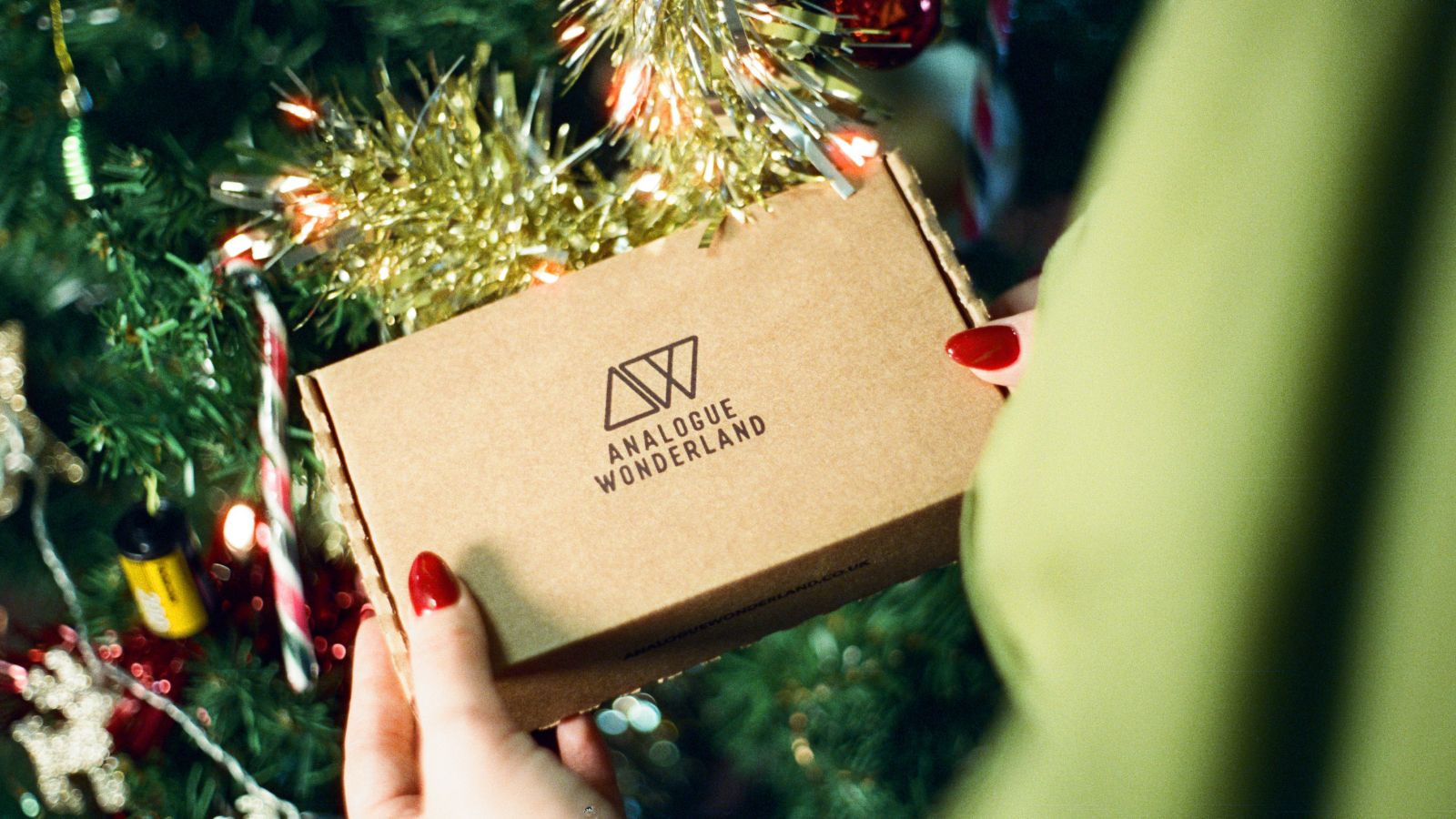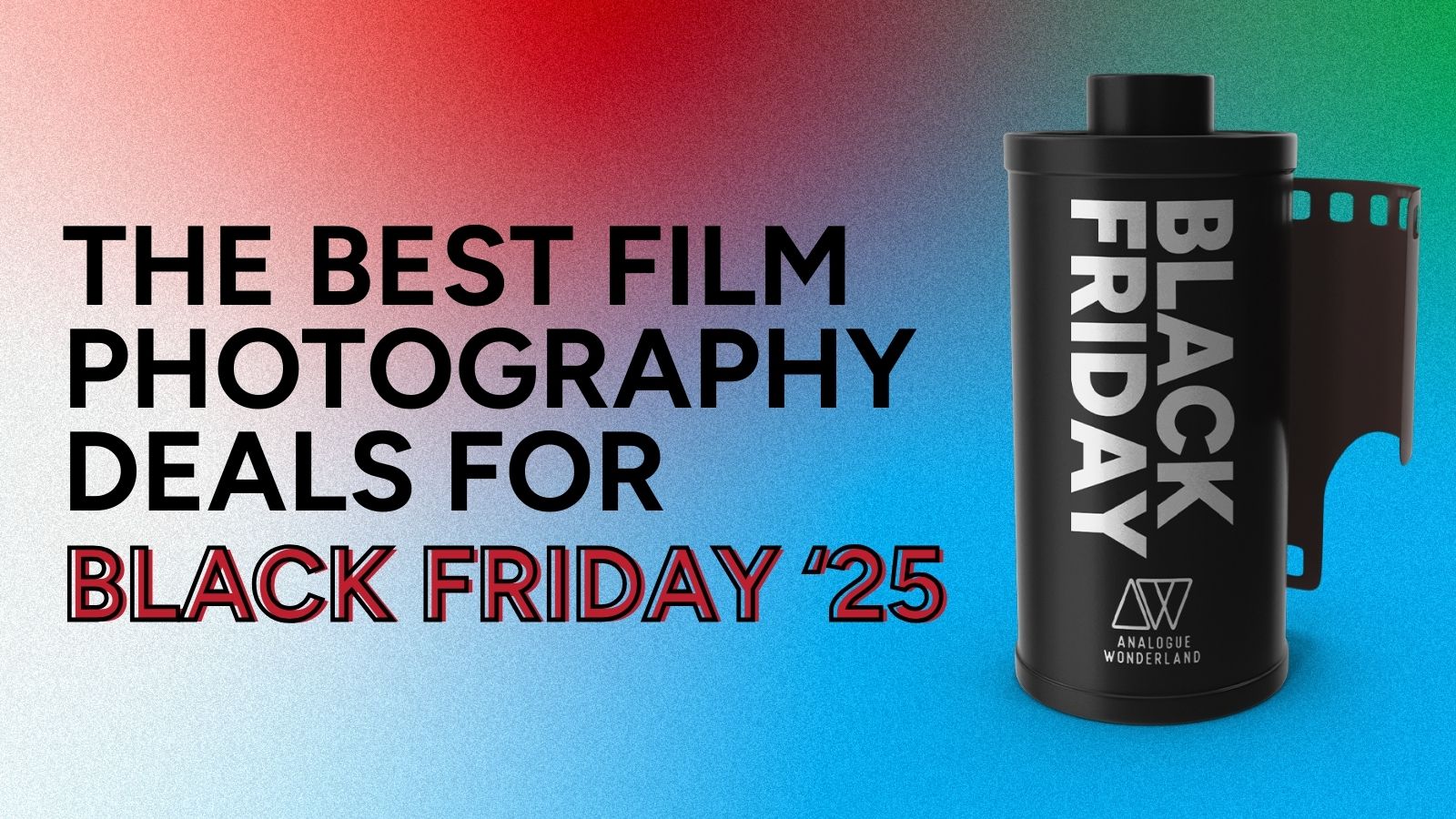Black Friday 2025 has landed at Analogue Wonderland, bringing some of our biggest film photography deals of the year - from discounted film and cameras to money-saving WonderLab processing offers, exclusive bundles, and festive specials available for a limited time only. Grab a great deal while stocks last!

Winter Wonderland - A Film User’s Guide to Winter Photography
By Paul McKay
For some reason the prospect of heading out on a winter photography session rarely gets people as fired up as during the warmer months. But if you’re serious about photography, you won’t let a bit of moody weather stand between yourself and capturing a good shot. Indeed, a penchant for winter photography is often what separates the Lewis Hamiltons of the photography world from the Sunday drivers.
Truly “bad” weather may not be to everyone’s liking, but it is rarely boring. And in any case, with its crystalline skies, stark silhouettes, dramatic clouds, and chiaroscuro lighting, winter actually has a lot going for it photographically.
(c) Nigel, shot on Rollei Superpan 200 - 35mm Film
Looking for some winter photography tips and inspiration? We’re confident that our guide to winter photography for film shooters will have you zipping up the puffer and pulling on the galoshes before we can say “frozen film”.
Or perhaps you’re looking for the perfect winter photography gift for an avid “film buff”? In that case, we recommend heading over to our Analogue WonderBox page and taking a moment to marvel at the amount of pure unadulterated joy a monthly film subscription can offer the discerning analogue photography enthusiast!
Winter Photography Ideas
For some film photographers, winter means short, dreary days; leaden clouds; and a lack of available light to work with. For others, it’s a chance to shoot nature at its most awesome and inspiring. The fact is though, that fantastic photography can come out of either scenario. You just need to approach things with the right frame of mind.
Has winter left you feeling apathetic and lacking in inspiration? What follows are a bunch of winter photography ideas to get you out of hibernation and back behind the camera again. Following which, we’ll be offering a few top winter photography tips to make sure your winter photography shoot goes entirely according to plan.
(c) Neil Lloyd, shot on Lomography Redscale - 35mm Film
Wonderful Winter Landscapes
If the first humans eventually found their way out of the Garden of Eden, maybe it was because paradise is boring. We all yearn for a little of the darkside too. So yes, the warmth and greenery of the spring and summer months of course make for pleasant shooting, but they don’t necessarily result in the best landscape photographs. For that, we need drama and tension; both things that winter weather brings in abundance.
The advantages of shooting landscape photography in winter are numerous. For a start: dew, frost, snow, ice, and even heavy rain or strong winds will add real interest and excitement to almost any scene. And let’s not forget that, when the sun does make an appearance during the winter months, it sits much lower in the sky; creating dramatic relief and casting long shadows across the land.
For the lazier film photographers among us, winter also offers the distinct advantage of making sunrise so much more accessible; arriving as it does many hours later than in mid Summer. Although perhaps loathe to admit it, there are no doubt many photographers who do not miss the 4am starts that come with shooting landscapes in June.
(c) Joe Sparkes shot on Ilford XP2 - 35mm Film
Hibernal Abstracts
Because winter changes the environment from what we usually think of as its “default” state, it is also a great time for shooting more experimental and non-figurative images. Ice crystals, snow-scapes, the glimmer of sunlight on fresh snow, frosted cobwebs, the colours of fallen leaves, mist and fog; all are top-notch raw material for shooting abstract photography.
Even a very light covering of snow can render the most banal scene virtually unrecognisable. As photographers we just need to learn to use these elements to our advantage and capture the results on film!
Winter Portrait Photography
If you're into your portrait photography you'll know that there are many ways to spend thousands on the latest studio strobes and softboxes in order to achieve the perfect “natural-looking diffusion” for exceptional portraiture. However it's worth noting that Mother Nature already provides a very similar contraption entirely free of charge for most of the winter months. Namely: a cloudy sky.
Golden hour and blue hour portraits can be very pretty, to be sure. But the diffused light created by an overcast sky is flattering like no other. And if you’re photographing subjects of a more “vintage” variety, you can bet they will be a lot more happy with the results if you shoot them on a cloudy day than if every wrinkle and blemish were to be thrown into stark relief by harsh sunlight.
(c) Rook, shot on Lomography Metropolis - 35mm Film
Of course, the challenge with winter portrait photography is to make something a little more interesting and dramatic of the all-over softness provided by a slate-grey sky. The trick here is to make your light source behave more like a studio photographer’s softbox; diffused, but directional.
Clearly you can’t easily go flagging off the overspill from the sky with black polyboards as you would do in the studio. But by using obstacles that naturally occur in the environment, you can position your subject so that the light only falls on them from a single direction. And this is when things start to get a little more interesting.
One last piece of winter portrait photography advice; if the cold starts to get a little too much for your model, don’t hesitate to step inside for a short break; the only red noses we want to see are on Rudolph!
Street Photography in Winter
Street photographers tend to be of a hardy disposition, but many may still balk at the idea of plying their trade in the deepest winter months. Yet doing street photography in winter can be highly rewarding. Not only for the perverse beauty of bleak city streets, but also the hustle and bustle of holiday markets (in normal years), and the warm glow and steamy windows of inviting cafes.
Of course, winter is also the season to be merry. Which on these shores is sometimes interpreted to mean “blind drunk at the office party.” And let’s be honest now, few subjects are more welcome in front of the street flaneur’s lens than uninhibited individuals with poor coordination in a state of semi-undress. Although there are many street photographers who have enjoyed the juxtaposition and comedy of downtown closing hour!
For those interested in winter street photography of a more artistic nature, the low angle of winter sun can make for dramatic lighting of a kind that even Phillip-Lorca diCorcia would be proud of. And strong beams of golden winter sunshine peaking through the gaps between buildings can have a distinctly Caravaggioesque effect on the carnival of street life.
Yet the beauty of winter rain is not to be undervalued in street photography either. Indeed, little is more atmospheric than the painterly shine of neon reflecting on freshly drenched tarmac. For a full-on Blade Runner vibe, grab yourself a few rolls of CineStill 800t film and head on over to your local China Town on a wet winter’s evening.
(c) Graeme Simpson shot on Cinestill 800T - 120 Film
Essential Winter Photography Tips
Hopefully our list of winter photography ideas now has you fully motivated and searching for the ear muffs. But before you head out into the big freeze with little more than a bag full of film and a hot thermos of your chosen tipple for company, it’s worth keeping in mind that winter photography presents a number of unique technical challenges.
So in order to avoid any unfortunate film-related mishaps, we recommend briefly running your eyes over the following essential winter photography tips.
Know Your Winter Photography Settings
Camera exposure works just the same in winter as in summer of course. But when people talk about winter photography settings they are referring to the fact that snowy scenes can be tricky to expose for if you don’t know what you’re doing.
As you’re using an old film camera, it’s a fairly safe bet that the light meter inside it will be of the center-weighted or evaluative variety (assuming it has a meter at all). In the best case scenario, light meters of this kind determine correct exposure by taking a sample from several points within the viewfinder, and then averaging them all together to get a reading.
Think of it like taking samples of wet paint from a landscape painter’s canvas. The light meter mixes all those colours together, and then - no matter what the outcome - labels the resulting shade “mid grey” (or, more likely, brown). Essentially, whatever you feed the camera’s light meter, it will total it all up and take that as its mid point; determining highlights and shadows from there.
If the scene you point your camera at is an average one - i.e. it includes a bit of sky, a bit of ground, and a bunch of other objects of varying shades and colours - then the result will likely be pretty accurate. The problem with winter photography, however, is that the scene is often anything but “average”.
Remember what we just said about the light meter totaling everything up and taking that as a mid tone? Imagine that you show the camera a snowy landscape; all there is to total up is white. And white is clearly not a mid tone. But that’s exactly what the light meter will assume it is, because that’s just how camera light meters are made to behave.
(c) Ted Smith shot on Ilford Pan F Plus- 120 Film
The result? Your beautiful “white” winter landscape will be totally underexposed. And there’s little more depressing than getting your film back from the lab only to discover that Christmas wasn’t white at all, but actually a dreary shade of grey. It’s like seeing your favorite white shirt come out of the wash pink!
Digital photographers don’t have to worry about this problem of course; they just look at the fancy little screens on the back of their plastic toy cameras and can adjust the exposure settings accordingly. But we real photographers don’t have that luxury.
Thankfully there are a couple of simple solutions to this problem. The first is to look around and see if there is a genuinely average scene nearby - in exactly the same lighting conditions as the one you wish to photograph - that you can point your camera at instead. If so, take a reading for this, set your exposure accordingly, and then turn back and photograph your chosen scene.
Easier still is to simply give the scene a stop or two of extra exposure. As this is far from a precise formula, though, you would likely do well to bracket your exposures; perhaps first trying a shot one stop lighter, and then shooting another image two stops over just to be sure. Alternatively, if you prefer to use your camera’s built in exposure compensation function, be sure to increase the number of increments to a similar degree.
Choose Your Film Wisely
On the whole, there is a lot less light available to us in winter than in summer. This makes slow ISO film somewhat inappropriate for winter photography. In fact, if you will be shooting handheld, plan to photograph moving subjects, or need to achieve a deep depth of field without the use of a tripod, a relatively fast speed film such as ISO 400, 800, or beyond will be pretty much essential for winter photography.
A slower film such as 100 ISO can work fine for winter photography too, of course; just as long as you will be shooting long exposures using a tripod. Indeed, in order to maintain grain-free image quality, most landscape photographers will probably want to stick with a slow film of 100 ISO and below even in winter.
If you want a really cold and wintry effect, get yourself some tungsten-balanced colour film - such as CineStill’s 800t - and then shoot it in daylight. Although keep in mind that the strong blue cast that this will create may not be to everyone’s liking.
Keep Your Energy Levels in the Red
Batteries perform poorly in the cold. If your camera runs on batteries (clue; if it has a built-in light meter then you can assume that it does) then be sure to bring a couple of extra ones along with you. Preferably tucked into your underwear (safety notice; this is a joke, do not try this, just keep them somewhere warm).
(c) Chuck taken on Fujifilm Superia X-Tra Film 35mm Colour ISO 400
Dress for the Occasion
“There’s no bad weather, only bad clothes” may have become something of a cliche in recent years, but there is of course plenty of truth to it.
You may be accustomed to hiking around in all weathers, and therefore not be too worried about the cold. But just remember that, contrary to its somewhat glamorous image, photography often entails a lot of standing around doing absolutely nothing. And that’s when your toes will drop off. If you plan on going out shooting for a long time, being overdressed is unlikely to become a problem.
The one exception to this rule is in terms of gloves. Obviously you need to keep your hands warm. However, you also need to be able to operate your camera without difficulty. This will not happen if you have to fumble to change the controls through a great big pair of chunky mittens.
Gloves are available specifically for operating cameras and electronics; typically featuring grippy padding on the fingertips. However, as such gloves are necessarily quite thin, a pair of these alone might not be enough to keep you warm for very long. Better to wear a larger and thicker pair of insulated gloves over them while you’re waiting around, and then take this outer layer off only when you need to adjust camera settings.
Think Ahead
Unless you spend the season in the Arctic Circle, winter weather can be unpredictable. So capturing stunning winter photography means planning ahead and keeping a close eye on the weather forecast.
Not that you should necessarily strap on your boots and start loading the trusty old Nikon with fresh film the moment a blizzard is predicted. But if a good covering of snow does fall overnight (or, just as equally, if a rare bit of winter sunshine is expected in the morning), you’ll want to get yourself organized in advance so as to be in the right place to capture the scene in all its immaculate glory. Ideally before everyone else gets there and makes the shot a lot busier; and certainly before it all starts to melt into an ugly slush.
While we’re on the topic, you know that expression about what you shouldn’t do in your own backyard? Well it’s a similar deal with snowscapes. For anyone not blessed to live somewhere with reliably dramatic weather it’s understandable that any serious snowfall will be cause for considerable excitement. Still, try to resist the urge to go steaming into the pristine powder like a goon, as by doing so you’ll only be messing up your own shot with footprints.
Instead, before making a single move, think carefully about what you might want to shoot, and where you might want to shoot it from. And be sure to arrive at that point via a route that is entirely off-camera.
(c) Maksvelas taken on Bergger Pancro 400 - 35mm Film
Final Thoughts
Hopefully you’ve discovered some inspiration in our list of winter photography ideas, and found the winter photography tips useful.
Those looking for a selection of novel emulsions to try out during the winter months, or on the hunt for the perfect holiday gift for film photographers, would do well to head on over to the Analogue WonderBox page. There you’ll find information about our exciting analogue film subscription service, offering a selection of three great 35mm films per month and the opportunity to participate in an exclusive contest.
Happy Winter Shooting!
Ready to dive in?
Keep Reading
View all
Christmas 2025: Shipping & Opening Hours
Christmas 2025 is fast approaching! To make sure your analogue goodies arrive in time, take note of our last shipping dates, plus opening and operating hours over the festive season. We've got everything you need to gift the magic of film photography this Christmas!

Film Photography Christmas Gift Guide 2025: Analogue Wonderland
Capture the magic of Christmas with film - no filters needed. Our 2025 Film Photography Christmas Gift Guide 2025 is packed with thoughtful presents for every type of shooter, from curious beginners to seasoned photographers. Discover film stocks, cameras, and creative accessories that will make this festive season truly memorable.
Subscribe to our newsletter 💌
Sign up for our newsletter to stay up to date on film photography news, sales and events:
Free Tracked Shipping
On all UK orders over £50
Passion For Film
An unbeatable range and an on-site lab
Our Customers Trust Us
Thousands of independent 5* reviews
All Deliveries are Carbon Neutral
Independently audited and verified by Planet
- Opens in a new window.




